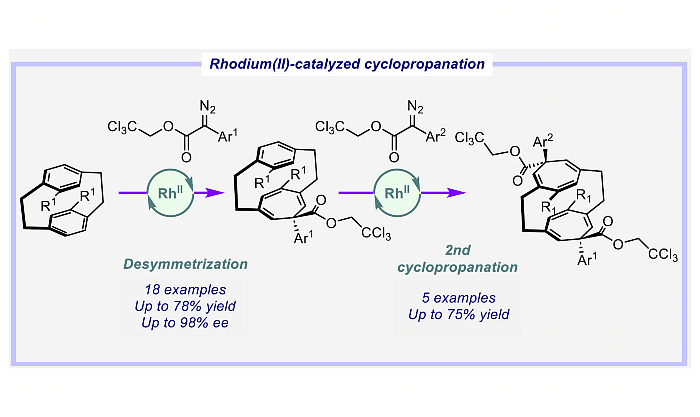
Research Highlights
Rhodium(II)-Catalyzed Asymmetric Cyclopropanation and Desymmetrization of [2.2]Paracyclophanes
Rhodium(II)-Catalyzed Asymmetric Cyclopropanation and Desymmetrization of [2.2]Paracyclophanes
Duc Ly, John Bacsa and Huw M. L. Davies
ACS Catal. 2024, 14, 6423–6431
https://www.doi.org/10.1021/acscatal.4c01292

Chiral [2.2]paracyclophane derivatives are of considerable interest because of their potential in asymmetric catalysis and the development of chiral materials. This study describes the scope of rhodium-catalyzed reactions of aryldiazoacetates with [2.2]paracyclophanes. The reaction with the parent [2.2]paracyclophane resulted in cyclopropanation at two positions, the ratio of which is catalyst-controlled. Due to the strain in the system, one of the cyclopropanes exists primarily as the norcaradiene structure, whereas the other preferentially exists as the cycloheptatriene conformer. In contrast, the reaction with [3.3]paracyclophane results in benzylic C–H functionalization. The reactions with substituted [2.2]paracyclophanes using chiral catalysts can result in either kinetic resolution or desymmetrization. The Rh2(S-pPhTPCP)4-catalyzed reaction of mono-substituted paracyclophanes results in kinetic resolution with a s factor of up to 20, whereas reactions on C2v-symmetric disubstituted [2.2]paracyclophanes with Rh2(S-TPPTTL)4 results in effective desymmetrization to form cycloheptatriene-incorporated paracyclophanes in 78-98% ee.

